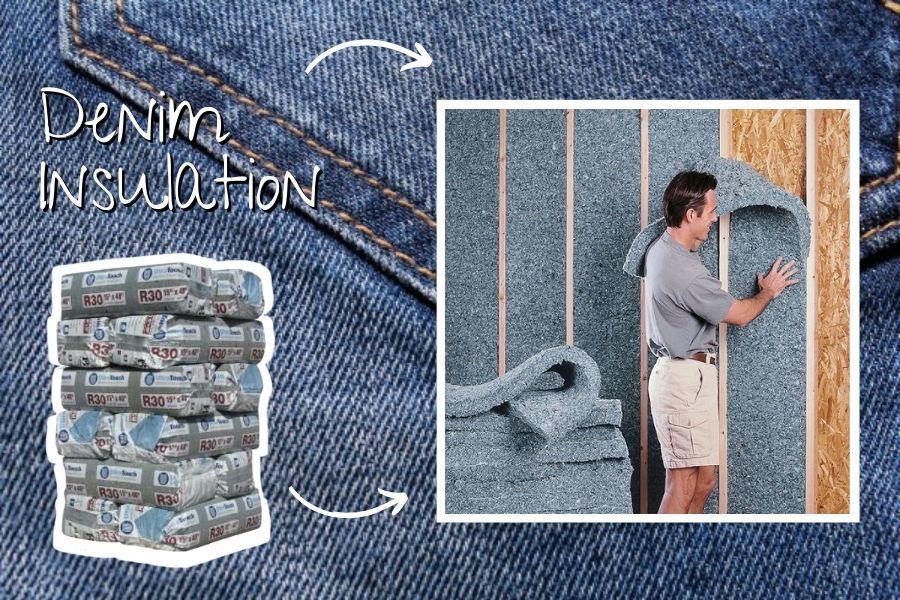Last updated on
Learn the proper steps to safely dispose of fiberglass insulation and understand the precautions necessary to prevent environmental harm and protect your health.
Key takeaways:
- Wear protective gear: Long sleeves, gloves, goggles, and a dust mask.
- Contain and label insulation: Wrap in plastic bags, seal, and label as “fiberglass insulation”.
- Research local regulations: Check waste disposal guidelines for specific instructions.
- Find a recycling facility: Locate a facility that accepts fiberglass for recycling.
- Consider reuse options: Repurpose for soundproofing, fill drafty areas, offer to community groups, or resell.
What Is Fiberglass Insulation?
Fiberglass insulation, a ubiquitous material in homes and buildings, consists of fine glass fibers spun into a lightweight, fluffy blanket or batts. Its main function is to inhibit the flow of heat, maintaining a comfortable indoor temperature and increasing energy efficiency. It can also take the form of loose-fill, which is blown into spaces, making it adaptable for various applications.
Due to its fibrous nature and potential health hazards if mishandled, proper disposal or recycling of this insulation is crucial for safety and environmental responsibility.
Safety First
Before handling fiberglass insulation, personal safety must be the priority. Fiberglass can irritate the skin, eyes, and respiratory system. Wear long sleeves, gloves, goggles, and a dust mask or respirator to minimize exposure.
Ensure your work area is well-ventilated to prevent inhalation of airborne fibers. Never compress or stuff the insulation into containers, as this can release tiny glass particles into the air. If working in tight spaces, take breaks to avoid overheating, and consider having a buddy system to monitor for signs of heat stress or irritation.
Remember that proper safety gear and procedures not only protect your health but also make the disposal or recycling process safer and more efficient.
How to Prepare Insulation for Disposal or Recycling
Preparing fiberglass insulation for disposal or recycling requires careful handling to minimize health risks and prevent environmental contamination:
1. Suit Up for Safety: Wear long sleeves, gloves, a dust mask, and protective eyewear to prevent irritation from the glass fibers.
2. Contain the Material: Roll or fold the insulation without compressing it too much, which can reduce its usefulness for recycling. Wrap it in heavy-duty plastic bags or sheeting to prevent fibers from escaping.
3. Seal and Label: Use tape to seal the bags shut. Clearly label them as “fiberglass insulation” to alert waste handlers to the contents.
4. Research Local Regulations: Before proceeding, consult your local waste disposal regulations. Some areas have specific guidelines or facilities for insulation disposal or recycling.
5. Find a Recycling Facility: If recycling is an option, locate a facility that accepts fiberglass. These places often repurpose the material for new insulation products.
6. Schedule a Pickup or Drop-Off: Some waste management services offer pick-up for large quantities of insulation, while others may require you to drop it off at their facility.
Remember, taking these steps not only contributes to environmental safety but also supports the recycling industry and promotes the circular economy.
Importance of Proper Disposal
Disposing of fiberglass insulation responsibly is crucial for both environmental and human health. Fiberglass, made from fine glass fibers, can cause irritation if it comes into contact with skin or is inhaled. If it ends up in landfills, it takes an exorbitant amount of time to break down, occupying valuable space and potentially releasing harmful substances.
Moreover, improper disposal can lead to environmental hazards. When fiberglass insulation is not contained and managed correctly, fibers can be carried by wind, ending up in water sources and natural habitats, affecting wildlife and ecosystems.
By ensuring that fiberglass insulation is disposed of in the right way, you help reduce the overall environmental footprint of construction materials. This action supports the continued sustainability of resources and encourages the development of recycling facilities, which can process these materials more efficiently, turning potential waste into valuable resources for other applications.
Options for Reusing, Upcycling, and Reselling Old Insulation
Fiberglass insulation, due to its longevity, often remains functional long after it’s been removed from its initial installation. Creative reuse can extend the life of this material and divert it from the landfill.
For DIY enthusiasts, fiberglass insulation scraps can be repurposed for soundproofing workshops or home theaters. The material’s sound-dampening qualities make it an excellent choice for these projects. Additionally, insulation can be cut into smaller pieces to fill drafty areas around windows and doors in your home, improving energy efficiency.
Community theater groups and schools sometimes seek materials for set construction and can use insulation for soundproofing or as a component in their builds. Offering your old insulation to these groups not only supports the arts but also embodies the principles of community sharing and sustainability.
When insulation is still in good condition and you have a considerable amount, reselling may be a viable option. Online marketplaces or local selling platforms often have sections for building materials where you can list your insulation. This not only recoups some costs but also ensures the product gets a second life.
Agricultural uses provide another avenue for reusing fiberglass insulation. Farmers have utilized insulation to protect plants from frost or to insulate small structures on their farms. However, ensure that the material is in a condition that won’t shed fibers and that it will be enclosed to prevent any contact with animals or produce.
Before repurposing or reselling, be transparent about the state of the insulation, confirming it’s free of mold, pests, and contaminants. Providing accurate descriptions and handling instructions preserves trust and safety in these transactions.
Related reading:
Table of Contents


